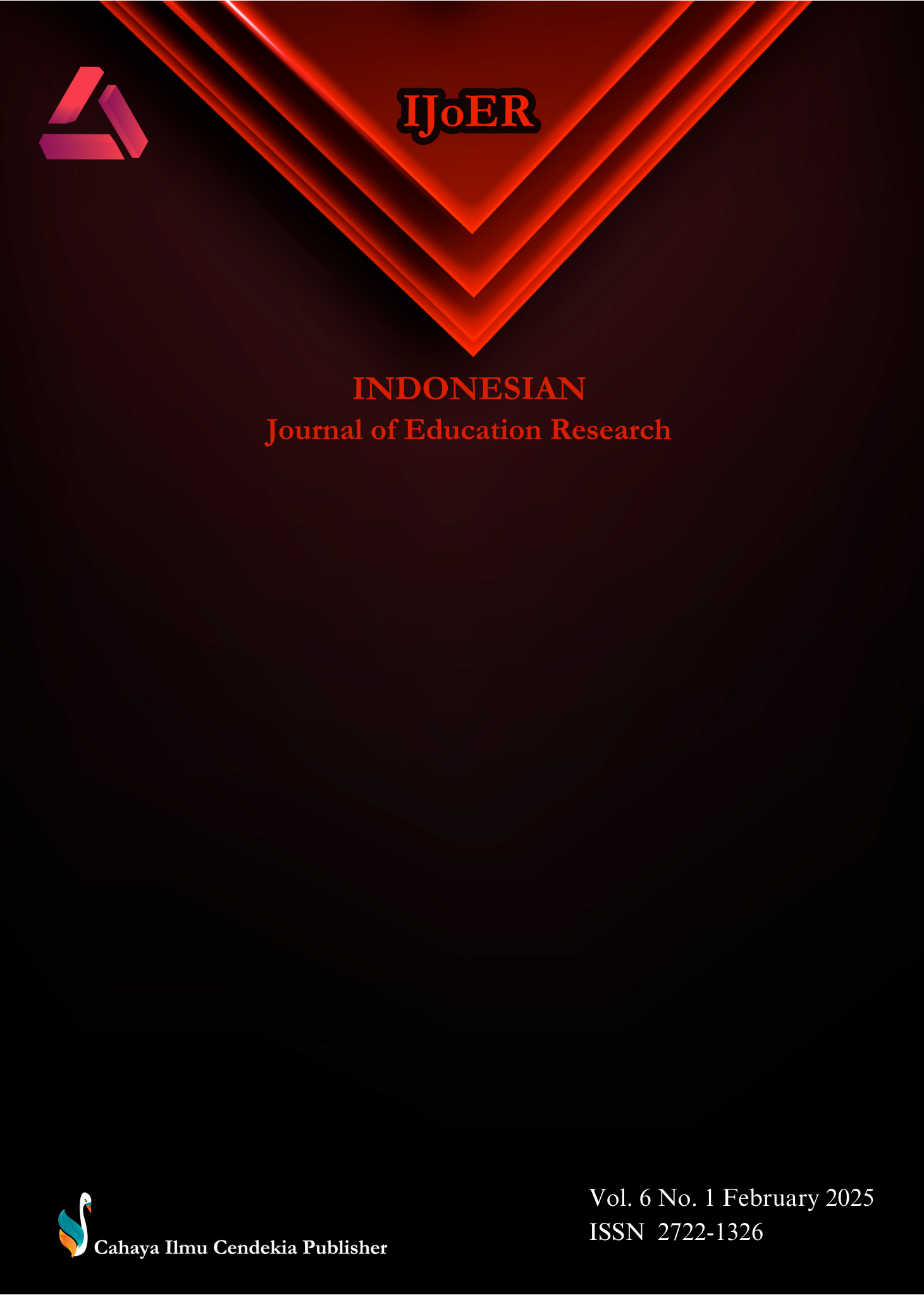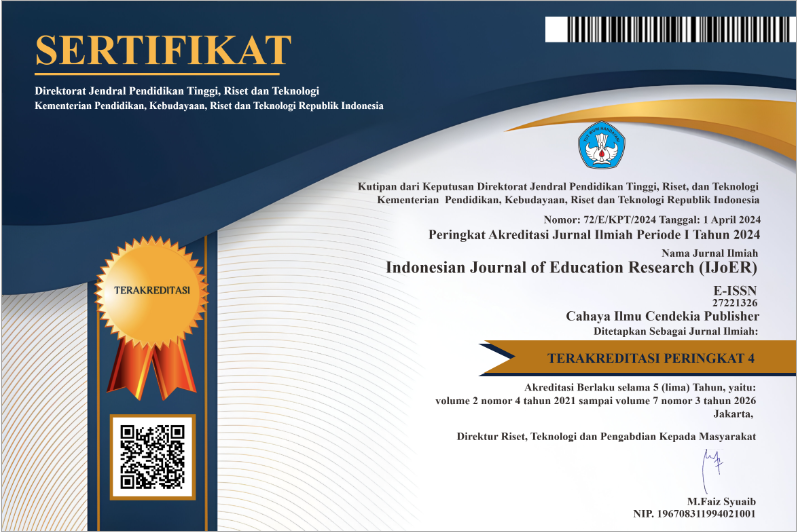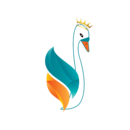The Feasibility of Saga Text Teaching Materials Utilizing a Website for Assignments and Resources in Class X at Azizi Islamic Senior High School
Abstract
Purpose of the study: This study aims to develop, assess the feasibility, and evaluate the effectiveness of saga text teaching materials utilizing a website as a platform for assignments and resources for Class X students at Azizi Islamic Senior High School.
Methodology: This study employs a Research and Development (R&D) approach using the 4D model by Thiagarajan, consisting of Define, Design, Development, and Dissemination stages. The research methods include qualitative and quantitative approaches. Data were collected through observations, interviews, and questionnaires, with material experts, media experts, teachers, and students serving as evaluators. The study uses a saturated sampling technique, involving 18 students from Class X.
Main Findings: The feasibility assessment categorized the saga text teaching materials as "very appropriate." The validity assessment from material experts resulted in 95%, while media experts rated it 87%, both categorized as "very decent." Teachers provided an evaluation score of 93%, and students rated it 91.22%, indicating positive responses. Student learning outcomes reached 91%, categorized as "very effective."
Novelty/Originality of this study: This study introduces a website-based teaching material approach tailored for saga text learning, enhancing student engagement and independent learning. Unlike conventional printed materials, this method integrates digital interactivity with real-time assignment submission, making it a modern and adaptive educational resource for literature instruction.
References
E. O. Bereczki and A. Kárpáti, “Technology-Enhanced Creativity: A Multiple Case Study of Digital Technology-Integration Expert Teachers’ Beliefs and Practices,” Think Skills Creat, vol. 39, p. 100791, Mar. 2021, doi: 10.1016/j.tsc.2021.100791.
S. Yuniarti and E. Darmanto, “Pengembangan Bahan Ajar Elektronik (BAE) Berbasis Flip PDF Professional Untuk Meningkatkan Hasil Belajar Peserta Didik Kelas IV SD Muatan Pelajaran IPS di Gugus Sultan Fatah Kecamatan Demak Kabupaten Demak,” Jurnal Prakarsa Paedagogia, vol. 5, no. 2, 2022.
V. Kumar and D. Sharma, “E-Learning Theories, Components, and Cloud Computing-Based Learning Platforms,” International Journal of Web-Based Learning and Teaching Technologies, vol. 16, no. 3, pp. 1–16, May 2021, doi: 10.4018/IJWLTT.20210501.oa1.
M. N. Purwanto, Psikologi Pendidikan. Bandung: Remaja Rosdakarya, 2002.
A. Haleem, M. Javaid, and R. P. Singh, “An Era of ChatGPT as a Significant Futuristic Support Tool: A Study on Features, Abilities, and Challenges,” BenchCouncil Transactions on Benchmarks, Standards and Evaluations, vol. 2, no. 4, p. 100089, Oct. 2022, doi: 10.1016/j.tbench.2023.100089.
R. Aprilasari and P. Z. Diana, “Evaluasi Kelayakan Gamifikasi dalam Membangun Minat Siswa pada Teks Cerita Rakyat,” Jurnal Genre (Bahasa, Sastra, dan Pembelajarannya), vol. 6, no. 1, pp. 192–207, 2024.
R. Siregar, M. O. Gafari, and A. Adisaputra, “Development of Folklore Text Teaching Materials (Hikayat) in the Form of Interactive Digital Multimedia in High Schools (SMA),” in Proceedings of the 8th Annual International Seminar on Transformative Education and Educational Leadership, AISTEEL 2023, 19 September 2023, Medan, North Sumatera Province, Indonesia, European Alliance for Innovation n.o., Dec. 2023. doi: 10.4108/EAI.19-9-2023.2340507.
I. S. Zinovieva et al., “The Use of GIS in Renewable Energy Specialist’s Learning,” J Phys Conf Ser, vol. 2611, no. 1, p. 012016, Oct. 2023, doi: 10.1088/1742-6596/2611/1/012016.
T. Endres, C. Vössing, K. A. Renninger, A. Eitel, and A. Renkl, “Learning Contexts Shape the Effect of Emotional Design– Facilitating Sustained Learning in Distraction-Prone Situations,” 2024. doi: 10.2139/ssrn.5002709.
A. Prastowo, Panduan Kreatif Membuat Bahan Ajar Inovatif: Menciptakan Metode Pembelajaran yang Menarik dan Menyenangkan. Yogyakarta: Diva Press, 2013.
M. N. N. Fanani, R. Risnawati, and M. T. ANH, “Pengembangan Media Pembelajaran Berbasis Web Google Sites Materi Teks Hikayat Kelas X SMA Nurul Huda Pucuk,” Jubah Raja: Jurnal Bahasa, Sastra, Dan Pengajaran, vol. 2, no. 2, pp. 101–109, 2023.
M. I. Z. Abidin, A. Alkhalidi, and F. Mustaffa, “GPT-3 for Education; Benefits and Concerns,” 2023, pp. 239–251. doi: 10.2991/978-2-38476-138-8_23.
S. Utami and L. Sadiyah, “Pengembangan Bahan Ajar Teks Cerita Panji Berbasis Content Language Integrated Learning (CLIL) untuk SMK,” Briliant: Jurnal Riset dan Konseptual, vol. 5, no. 1, pp. 27–35, 2020.
M. Sarosa, M. H. Wijaya, H. Tolle, and A. E. Rakhmania, “Implementation of Chatbot in Online Classes using Google Classroom,” International Journal of Computing, pp. 42–51, Mar. 2022, doi: 10.47839/ijc.21.1.2516.
A. J. E. Fahriyanti, C. A. Salsabilla, R. W. Stiawan, and R. Andayani, “Pengembangan ‘Flip Digital Learning’ sebagai Inovasi Media Pembelajaran Cerita Hikayat untuk Siswa Kelas X SMA/MA,” MARDIBASA: Jurnal Pembelajaran Bahasa dan Sastra Indonesia, vol. 2, no. 2, pp. 108–121, Dec. 2022, doi: 10.21274/jpbsi.2022.2.2.108-121.
S. A. Jauza and F. Lubis, “Development of Google Sites-Based Procedural Text Teaching Materials for Class VII,” Seloka: Jurnal Pendidikan Bahasa dan Sastra Indonesia, vol. 12, no. 2, pp. 160–172, Aug. 2023, doi: 10.15294/SELOKA.V12I2.69782.
S. Svetsky and O. Moravcik, “A Universal IT Support System for Teachers for Educational Processes, Publishing and Academic Research Using All-in-One Educational Software,” in Proceedings of the Future Technologies Conference (FTC) 2022, Volume 3, Springer, Cham, 2023, pp. 680–697. doi: 10.1007/978-3-031-18344-7_48.
B. Nurgiyantoro, Teori Pengkajian Fiksi. Yogyakarta: UGM Press, 2019.
N. Budiana and A. Mumpuni, “Pengembangan Materi Ajar Bahasa Indonesia Berbasis Web dengan Teknik Pidato untuk Meningkatkan Keterampilan Berbicara Siswa Kelas XI SMA Negeri 1 Wanasari Brebes,” Syntax Literate: Jurnal Ilmiah Indonesia, vol. 4, no. 11, pp. 134–151, 2019.
M. R. A. Saputra, Pengembangan Bahas Ajar Sejarah Berbasis WEB. Solo: Yayasan Lembaga Gumun Indonesia, 2021.
I. Lauriola, A. Lavelli, and F. Aiolli, “An Introduction to Deep Learning in Natural Language Processing: Models, Techniques, and Tools,” Neurocomputing, vol. 470, pp. 443–456, Jan. 2022, doi: 10.1016/j.neucom.2021.05.103.
P. Z. Diana, I. P. Indriyani, R. Sulistiyono, P. A. Wulandari, and R. A. Prafitra, “Developing Website-Based Gamification Learning Media on Debate Texts in Indonesian Language Learning,” Journal of Languages and Language Teaching, vol. 12, no. 1, p. 296, Jan. 2024, doi: 10.33394/jollt.v12i1.9744.
S. Svetsky, O. Moravcik, M. Shyshkina, Z. Cervenanska, and J. Kotianova, “The Knowledge-Based Design of Educational Technology,” in Proceedings of the Future Technologies Conference (FTC) 2021, Volume 3, Springer, Cham, 2022, pp. 759–775. doi: 10.1007/978-3-030-89912-7_58.
Iskandarwassid and D. Sunendar, Strategi Pembelajaran Bahasa. Bandung: Remaja Rosdakarya, 2016.
S. Aisyah, E. Noviyanti, and T. Triyanto, “Bahan Ajar sebagai Bagian dalam Kajian Problematika Pembelajaran Bahasa Indonesia,” Jurnal Salaka: Jurnal Bahasa, Sastra, Dan Budaya Indonesia, vol. 2, no. 1, 2020.
D. C. Hadi, “Pengembangan Bahan Ajar Memahami Hikayat Bermuatan Nilai-Nilai Moraluntuk Peserta Didik SMA/MA,” Seloka: Jurnal Pendidikan Bahasa dan Sastra Indonesia, vol. 4, no. 1, 2015.
Sugiyono, Metode Penelitian Kuantitatif, Kualitatif, dan R&D. Bandung: CV Alfabeta, 2017.
C. S. Santiago Jr, M. P. Leah Ulanday, Z. J. Centeno, Ma. C. Bayla, and J. S. Callanta, “Flexible Learning Adaptabilities in the New Normal: E-Learning Resources, Digital Meeting Platforms, Online Learning Systems and Learning Engagement,” Asian Journal of Distance Education, vol. 16, no. 2, p. 38, Dec. 2021, Accessed: Feb. 12, 2025. [Online]. Available: http://asianjde.com/ojs/index.php/AsianJDE/article/view/580
S. Sugiyono, Metode Penelitian Kualitatif: Untuk Penelitian yang Bersifat Eksploratif, Enterpretatif, Interaktif, dan Konstruktif (Cocok untuk Mahasiswa S1, S2, S3, Dosen dan Penelitia. Bandung: CV Alfabeta, 2020.
A. Markula and M. Aksela, “The Key Characteristics of Project-Based Learning: How Teachers Implement Projects in K-12 Science Education,” Disciplinary and Interdisciplinary Science Education Research, vol. 4, no. 1, pp. 1–17, Dec. 2022, doi: 10.1186/S43031-021-00042-X/FIGURES/1.
A. Haleem, M. Javaid, M. A. Qadri, and R. Suman, “Understanding The Role of Digital Technologies in Education: A Review,” Sustainable Operations and Computers, vol. 3, pp. 275–285, 2022, doi: 10.1016/j.susoc.2022.05.004.
D. Kim and M. Li, “Digital Storytelling: Facilitating Learning and Identity Development,” Journal of Computers in Education, vol. 8, no. 1, pp. 33–61, Mar. 2021, doi: 10.1007/S40692-020-00170-9/TABLES/4.
S. Hardhienata, Y. Suchyadi, and D. Wulandari, “Strengthening Technological Literacy in Junior High School Teachers in The Industrial Revolution Era 4.0,” JHSS (Journal of Humanities And Social Studies), vol. 5, no. 3, pp. 330–335, Oct. 2021, doi: 10.33751/jhss.v5i3.4220.
S. F. Erümit, “The Distance Education Process in K–12 Schools During The Pandemic Period: Evaluation of Implementations in Turkey from The Student Perspective,” Technology, Pedagogy and Education, vol. 30, no. 1, pp. 75–94, Jan. 2021, doi: 10.1080/1475939X.2020.1856178.
V. M. Bradley, “Learning Management System (LMS) Use with Online Instruction.,” International Journal of Technology in Education, vol. 4, no. 1, pp. 68–92, 2021, doi: 10.46328/ijte.36.
S. Zhou et al., “WebArena: A Realistic Web Environment for Building Autonomous Agents,” International Conference on Learning Representations, ICLR, Jul. 2023. Accessed: Feb. 12, 2025. [Online]. Available: https://arxiv.org/abs/2307.13854v4
O. E. Chinonso, A. M.-E. Theresa, and T. C. Aduke, “ChatGPT for Teaching, Learning and Research: Prospects and Challenges,” Global Academic Journal of Humanities and Social Sciences, vol. 5, no. 2, pp. 33–40, Mar. 2023, doi: 10.36348/gajhss.2023.v05i02.001.
D. R. E. Cotton, P. A. Cotton, and J. R. Shipway, “Chatting and Cheating: Ensuring Academic Integrity in The Era of ChatGPT,” Innovations in Education and Teaching International, vol. 61, no. 2, pp. 228–239, Mar. 2024, doi: 10.1080/14703297.2023.2190148.
A. G. Cavinato, R. A. Hunter, L. S. Ott, and J. K. Robinson, “Promoting Student Interaction, Engagement, and Success in an Online Environment,” Anal Bioanal Chem, vol. 413, no. 6, pp. 1513–1520, Mar. 2021, doi: 10.1007/S00216-021-03178-X/FIGURES/3.
A. Iskender, “Holy or Unholy? Interview with Open AI’s ChatGPT,” European Journal of Tourism Research, vol. 34, p. 3414, Mar. 2023, doi: 10.54055/ejtr.v34i.3169.
Copyright (c) 2025 Muhammad Zulfadlan Nduru, Ali Ali, Rita Rita

This work is licensed under a Creative Commons Attribution 4.0 International License.
Authors who publish with this journal agree to the following terms:
- Authors retain copyright and acknowledge that the Indonesian Journal of Education Research (IJoER) is the first publisher licensed under a Creative Commons Attribution 4.0 International License.
- Authors are able to enter into separate, additional contractual arrangements for the non-exclusive distribution of the journal's published version of the work (e.g., post it to an institutional repository or publish it in a book), with an acknowledgment of its initial publication in this journal.
- Authors are permitted and encouraged to post their work online (e.g., in institutional repositories or on their website) prior to and during the submission process, as it can lead to productive exchanges and earlier and greater citation of published work.







.png)
.png)




















